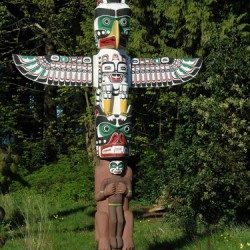Definition of Literary Historiography
Miscellanea / / August 02, 2022
Locate the works in each period, reach a periodization of the history of literature and understand the characteristics of each historical moment.






Bachelor of Hispanic Letters
The literary work, as a cultural product, is inserted within a moment in history. That moment is described and represented in the author's imagination, resulting in a personal analysis that we can access through reading. Many of these works have common features or were written at a similar time (such as a certain period in the Middle Ages).
For this reason, scholars of literature They have been concerned with locating each work in the corresponding period, grouping them also by those characteristics they share (fundamentally in terms of style). Each of these periods in the history of literature has been given a name, based on questions of thought, trends or even historical moment.
object of study
When asking ourselves what it is that studies the historiography literary the most obvious answer is: it deals with the study of the dynamics of literature over time, how it changes or has changed over time. But these definitions do not specify the nature of the object, that is, literature. For this reason, four areas of this have been delimited, which are based above all on the accurate determination of what is considered literature. These areas are production, tradition, reception and doctrine. Taken together, these dimensions encompass the total literary situation.
Production: covers the literary production of a given time and is at the center of almost all historical-literary studies. In this area, the aim is to delineate chronologically the precise character of the works at different times, In addition, the change that these have suffered between two time points is measured (regardless of their proximity). It is also about inquiring about the interrelationships and limits between the discursive manifestations, both written and oral. An example is the literature that was produced in the Renaissance (s. XVI), where veneration prevailed over rediscovered authors of classical antiquity and themes such as the cult of beauty and man as the epicenter of life.
Tradition: here the living tradition that exists at various times is covered. This refers to a selection of the total production of a literature framed in a region, and this is made by readers, writers and critics of the time. In this case, the canons of individual works are taken into account, such as generic models or artistic techniques. For example, everything that was produced in the period known as the Spanish Golden Age (which contains the Renaissance, s. XVI, and the Baroque, s. XVII, is Spain). Here chivalric themes continue to flourish, the picaresque novel is born and love and mysticism reign in poetry.
Reception: this area is by definition dynamic and changing, since it is based above all on the readers, those who “receive” the literary work. It is made up of various updates and concretions of the work, genre or artistic method. The interpretations and understandings (readings) given to past works are studied. This area is also known as reception history (in criticism it is taken as the "critique of reception"). reception”) and deals not particularly with the texts, but with the reception they have through the awareness of several generations.
Doctrine: the latter includes the study of critical opinions about literature, as a whole and also considering individual aspects of it. These aspects are held by readers, writers or critics and form expectations, habits, norms, tastes and requirements of how the literary work should look (or feel).
In this way, taking these aspects into consideration, it can be said that literary history has four interrelated objects that define literary history. evolution of the literary product and which are based on the intrinsic aesthetic value of each of these products.
Periodization of literature
The objective of periodization is to order the treated materials in chronologically consistent periods that make sense. Wellek defines these periods as intervals dominated by a system of literary norms, in which common features can be identified that shape an aesthetic. This, however, does not mean that certain characteristics cannot be presented at another time, but rather that they dominate the literary production of that moment in which it is framed.
Literary historians face several difficulties when designing the periods in which the work is inserted. It is evident that it is a historical study, since the literary work is born at a given moment and is conditioned by traditions and specific circumstances of that moment. However, the fact that it transcends time and outlives its author must be considered.
In general, temporary variables are accepted for this definition: centuries and dates are converted in determinants, especially the century is used as a unit of measurement of the emergence and survival of a movement. But these definitions are uncertain, especially when dates are taken from political, religious or social events.
Another of the problems faced by periodization has to do with the definition of the literary. What genres should historiography cover? Where would essays enter, pre-Hispanic literature in the case of Latin America, orality?
For this reason, it is not only spaces defined by temporality that are taken into account when time to periodize literary history, but is based on the predominance of a style certain.
The recognized periods and the moments that they comprise, in general, are (periodization proposed by Carlos Bousoño in “Literary times and evolution”):
MIDDLE AGES: includes the pre-feudal and feudal period until the middle of the 11th century. In addition, the commercial and industrial period, until well into the fifteenth century).
MODERN AGE: from the fifteenth century to the last third of the eighteenth.
CONTEMPORARY AGE: includes the temporary space until the Second World War.
POST-CONTEMPORARY AGE: literature produced after World War II.
A more detailed delimitation would be the following:
MEDIEVAL PERIOD: it covers the 13th, 14th, 15th centuries, and the so-called Pre-Renaissance.
GOLDEN CENTURY: 16th century, Renaissance, 17th century and Baroque.
ILLUSTRATION AND NEOCLASSICISM: Post-baroque (s. XVIII) and Neoclassicism.
ROMANTICISM AND REALISM: Romanticism and Realism-Naturalism (s. nineteenth).
CONTEMPORARY LITERATURE (s. XX): End of the century, Modernism and 98, Noucentisme, Group of 1927, Postwar (until 1976), and literature after 1976.
From contemporary times, in the 20th century, the passage from one period to another becomes more vertiginous, perhaps due to the variety of styles and fashions. For this reason, criticism has been given to the use of more delimiting concepts in this sense, such as school, generation or group, which are not opposed to the concept of period. These have been applied not only to the literature of the 20th century and later, but also to earlier times. as the “Generation of 98” in Spanish literature, which refers to flourishing authors around 1898.
References
Barnadas, J. M.: Notes on some problems of literary history.Margolin, U.: On the object of study of literary history.
Pizarro, A.: Designing literary history today?
Servera, J.: Educational teaching project.
Vodicka, F.: Literary history: its problems and tasks.



